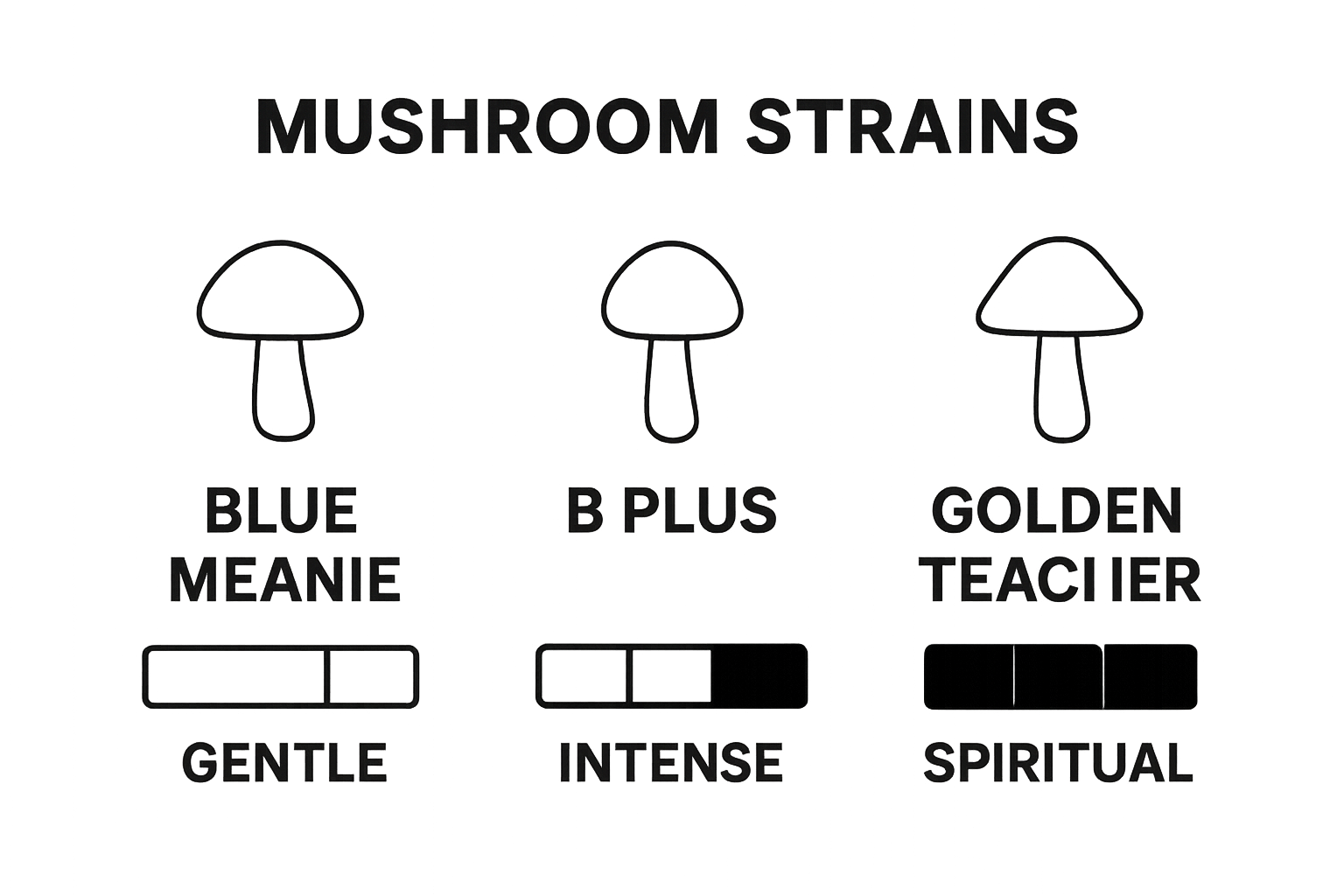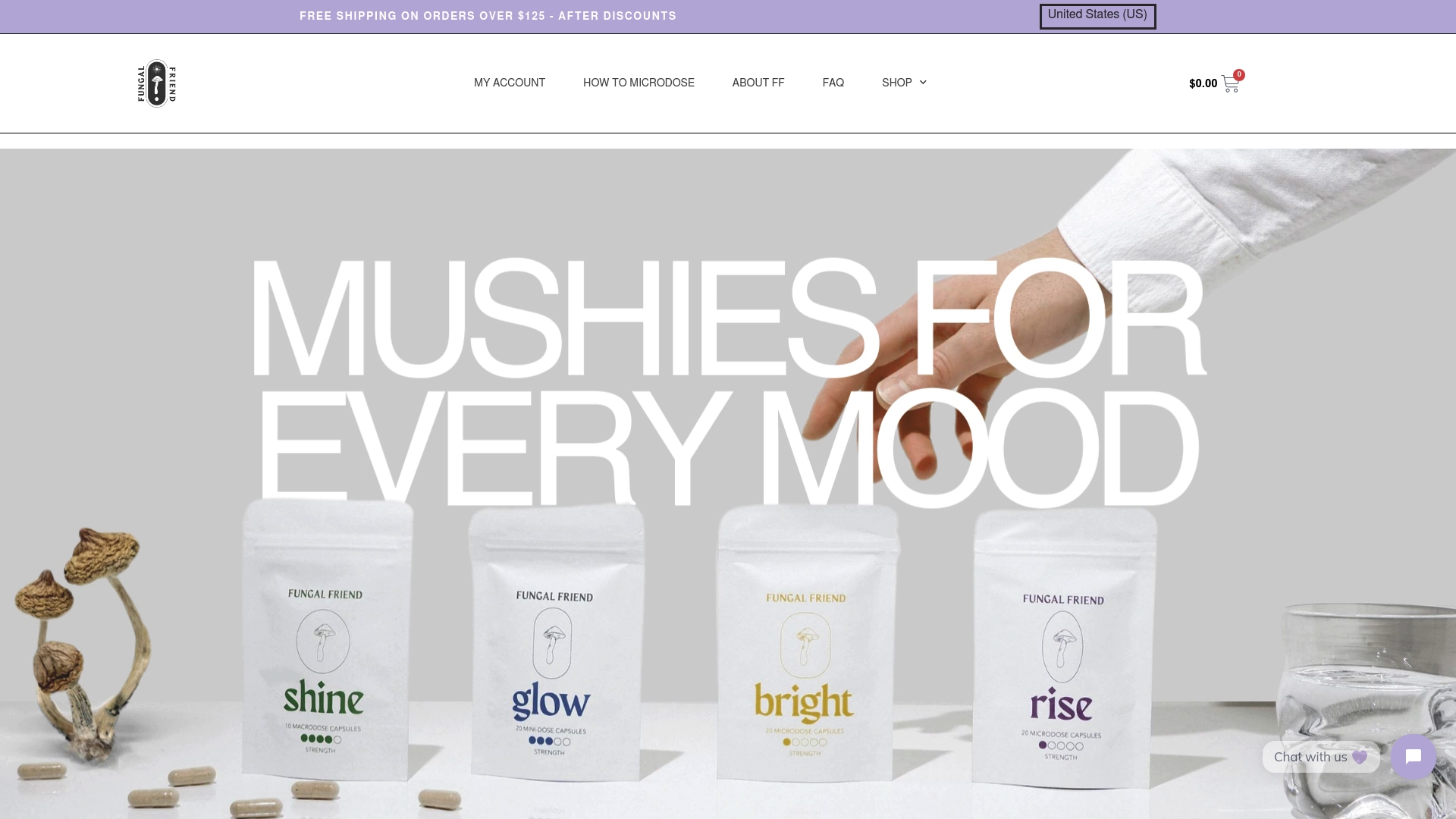Understanding the Science of Psilocybin: Insights Explained
Psilocybin mushrooms have sparked global curiosity due to their mind altering effects and links to mental wellness. People are often surprised to learn that over 200 different mushroom species naturally produce psilocybin. This compound is more than just a source of trippy visuals or altered moods. It is now at the center of a scientific revolution that may reshape how we understand and treat the human mind.
Table of Contents
- What Is Psilocybin? A Closer Look At Its Nature
- The Role Of Psilocybin In Mental Health Treatments
- How Psilocybin Affects The Brain: Mechanisms Unpacked
- Microdosing Psilocybin: Benefits And Considerations
- Exploring Different Strains And Their Unique Effects
Quick Summary
| Takeaway | Explanation |
|---|---|
| Psilocybin alters brain connectivity | This compound creates new neural pathways, temporarily reorganizing how different parts of the brain communicate. |
| Effective for depression treatment | Clinical trials show psilocybin can significantly reduce symptoms in patients with major depressive disorder. |
| Potential in addressing anxiety and PTSD | Psilocybin may help manage anxiety in terminal illnesses and alleviate PTSD symptoms when combined with therapy. |
| Microdosing enhances cognitive function | Responsible microdosing can improve mood, focus, and creativity without intense psychedelic effects. |
| Strain differences influence experiences | Different psilocybin mushroom strains have unique effects and potency, impacting individual experiences and therapeutic uses. |
What is Psilocybin? A Closer Look at Its Nature
Psilocybin represents a fascinating natural compound with profound neurological implications. As a naturally occurring psychedelic alkaloid, it emerges from specific mushroom species and holds remarkable potential for understanding human consciousness and mental health.
The Chemical Identity of Psilocybin
At its core, psilocybin is a tryptamine alkaloid with a unique molecular structure that enables extraordinary interactions within the human brain. According to research from the National Center for Biotechnology Information, this compound is produced by over 200 different mushroom species, predominantly found in genera like Psilocybe, Panaeolus, and Copelandia.
The molecular composition of psilocybin involves a phosphorylated version of psilocin, which allows it to cross the blood brain barrier effectively. When consumed, the compound is rapidly metabolized into psilocin, its active form, which then interacts with serotonin receptors in the brain.
Neurological Interaction and Effects
Psilocybin’s primary mechanism of action involves binding to serotonin receptors, specifically the 5-HT2A receptor subtype. This interaction triggers a cascade of neurological responses that can dramatically alter perception, mood, and cognitive processing. The compound essentially temporarily reorganizes brain connectivity, creating novel neural pathways and disrupting typical default mode network patterns.
Key characteristics of psilocybin include:
- Rapid metabolization into psilocin within the human body
- Ability to cross the blood brain barrier efficiently
- Profound interactions with serotonin receptor systems
- Potential for creating temporary but significant neurological changes
Understanding psilocybin requires recognizing it not just as a compound, but as a complex molecule with intricate neurological interactions that continue to fascinate researchers worldwide.
The Role of Psilocybin in Mental Health Treatments
Psilocybin has emerged as a groundbreaking compound in mental health research, challenging traditional psychiatric treatment paradigms and offering new hope for individuals struggling with complex psychological conditions. Its potential therapeutic applications represent a significant shift in understanding mental health interventions.
Breakthrough in Depression and Anxiety Treatment
According to research published in JAMA Psychiatry, psilocybin demonstrates remarkable efficacy in treating major depressive disorder. Clinical trials have shown that patients receiving psilocybin assisted therapy experienced substantial and sustained reductions in depressive symptoms, with more than two thirds of participants showing significant improvements.
The compound’s unique neurological mechanism allows it to interrupt entrenched mental patterns, providing a reset for individuals trapped in persistent negative cognitive cycles. Unlike traditional antidepressants that require daily consumption, psilocybin treatment often involves carefully monitored single or limited dosage sessions.
Expanding Treatment Horizons
Psilocybin’s therapeutic potential extends beyond depression, showing promising results in addressing various mental health challenges. Key areas of research include:
- Treatment of treatment resistant depression
- Management of anxiety in patients with life threatening illnesses
- Potential interventions for addiction and substance use disorders
- Alleviating symptoms of post traumatic stress disorder (PTSD)
Learn more about the potential therapeutic uses of psilocybin in our comprehensive guide.
Researchers emphasize that psilocybin treatment is not a standalone solution but works most effectively when integrated with professional psychotherapy. The compound appears to create neuroplastic changes that, combined with therapeutic support, can help patients develop new psychological perspectives and coping mechanisms.

How Psilocybin Affects the Brain: Mechanisms Unpacked
Understanding the neurological impact of psilocybin requires delving into complex brain chemistry and receptor interactions. This compound does not simply alter brain function but fundamentally transforms neural communication and connectivity in ways that challenge traditional neuroscientific perspectives.
Receptor Interaction and Neurochemical Transformation
According to neuroscience research published in neuropharmacology journals, psilocybin primarily acts as an agonist of 5-HT2A serotonin receptors located in cortical pyramidal cells. This interaction triggers a cascade of neurochemical changes that dramatically reshape brain activity, particularly in regions responsible for perception, emotion, and cognitive processing.
When psilocybin enters the system, it is rapidly converted to psilocin, which can cross the blood brain barrier and directly interact with serotonin receptors. This interaction leads to significant alterations in glutamate extracellular levels in the frontal cortex and hippocampus, effectively disrupting typical neural communication patterns.
Neuroplasticity and Default Mode Network Disruption
One of the most fascinating aspects of psilocybin is its ability to induce temporary neuroplasticity. The compound essentially creates a neurological “reset” by disrupting the brain’s default mode network (DMN), a system of interconnected brain regions associated with self referential thinking and rigid cognitive patterns.
Key neurological changes induced by psilocybin include:
- Increased neural connectivity across typically segregated brain regions
- Reduction in brain network rigidity
- Enhanced communication between different brain hemispheres
- Temporary dissolution of entrenched cognitive patterns
Explore more about how psilocybin transforms mind body connections.
Researchers continue to investigate how these neurological transformations might provide therapeutic benefits for conditions like depression, anxiety, and addiction, highlighting psilocybin’s potential as a powerful tool for understanding and potentially treating complex psychological conditions.
Microdosing Psilocybin: Benefits and Considerations
Microdosing represents a nuanced approach to experiencing psilocybin’s potential benefits without inducing full psychedelic experiences. This method involves consuming extremely small, sub perceptual doses that aim to enhance cognitive function, emotional well being, and overall mental performance.
Understanding Microdosing Protocol
According to research published in PubMed, microdosing involves consuming approximately 1/10 to 1/20 of a standard psychedelic dose. These minimal quantities are designed to produce subtle neurological changes without dramatic alterations in perception or consciousness. The goal is to leverage psilocybin’s neuroplastic properties while maintaining full cognitive functionality.
Typical microdosing protocols often follow structured schedules, such as consuming a minimal dose every third or fourth day. This approach helps prevent tolerance build up and allows the brain to integrate potential neurological modifications gradually.
Potential Cognitive and Emotional Benefits
Researchers have identified several potential advantages associated with responsible microdosing practices:
- Enhanced creative thinking and problem solving capabilities
- Improved mood regulation and emotional resilience
- Increased mental clarity and focus
- Potential reduction in anxiety and depressive symptoms
- Subtle improvements in neuroplasticity
Learn more about different types of microdosing approaches for wellness.
While promising, microdosing remains an emerging field of research. Individuals considering this approach should consult healthcare professionals, understand personal health contexts, and approach the practice with informed caution and respect for their neurological well being.
Exploring Different Strains and Their Unique Effects
Psilocybin mushrooms exhibit remarkable diversity, with each strain presenting a distinctive profile of psychoactive compounds, genetic characteristics, and potential therapeutic impacts. Understanding these nuanced differences allows for more targeted and intentional use of psilocybin across various wellness and therapeutic contexts.

Strain Diversity and Genetic Complexity
According to genomic research published in scientific journals, different Psilocybe species demonstrate significant variability in psilocybin and psilocin concentrations. Advanced liquid chromatography techniques have revealed that strains like Blue Meanie, Creeper, B Plus, Texas Yellow, and Thai Cubensis contain unique ratios of psychoactive compounds, suggesting that each strain offers a subtly different neurological experience.
The genetic diversity of psilocybin mushrooms extends beyond simple compound concentration. Environmental conditions, growing parameters, and genetic mutations can dramatically influence the mushroom’s final chemical composition, creating a complex landscape of potential effects.
Characteristic Effects of Notable Strains
While individual experiences vary, researchers have observed some consistent patterns across different psilocybin strains:
- Blue Meanie: Known for intense visual experiences and deep introspective journeys
- B Plus: Reported to provide more gentle, manageable psychedelic experiences
- Golden Teacher: Often associated with profound spiritual and educational insights
- Penis Envy: Recognized for exceptionally high potency and powerful psychological effects
- Mazatapec: Traditionally linked with meditative and contemplative experiences
Discover more about selecting the right mushroom strain for your wellness journey.
Researchers continue to explore how genetic variations and environmental factors contribute to the unique characteristics of different psilocybin strains, highlighting the complexity and potential of these remarkable fungi.
Below is a table comparing the characteristic effects of notable psilocybin mushroom strains mentioned in the article to help readers distinguish between their unique profiles.
| Strain | Typical Effects | Relative Potency |
|---|---|---|
| Blue Meanie | Intense visuals, deep introspection | High |
| B Plus | Gentle, manageable psychedelic experience | Moderate |
| Golden Teacher | Profound spiritual and educational insights | Moderate |
| Penis Envy | Powerful psychological effects, exceptionally strong | Very High |
| Mazatapec | Meditative, contemplative experiences | Moderate |
Ready to Experience the Science of Psilocybin for Yourself?
You have just explored how psilocybin works in the brain, its role in promoting neuroplasticity, and its potential in mental health support. If you are curious about trying microdosing or want support with anxiety, mood, or mental clarity, Fungal Friend is here to help. Our curated product range brings the science of psilocybin into real everyday wellness solutions designed for both newcomers and experienced users.

Discover how our carefully crafted psilocybin capsules, teas, and edibles can support your mental health goals. For a breakdown of available options and strain differences, start with our Uncategorized Archives or browse the Fungal Friend homepage for the best wellness experience. Now is the time to make informed choices and find the right natural support for you.
Frequently Asked Questions
What is psilocybin and how does it affect the brain?
Psilocybin is a naturally occurring psychedelic compound found in certain mushroom species. It interacts with serotonin receptors in the brain, specifically the 5-HT2A receptor, leading to altered perception, mood, and cognitive processes.
How is psilocybin used in mental health treatments?
Psilocybin is being researched as a treatment for various mental health conditions, including depression, anxiety, and PTSD. It is often administered in controlled environments alongside therapy to help interrupt negative cognitive patterns.
What is microdosing and what are its potential benefits?
Microdosing involves taking sub-perceptual doses of psilocybin, typically about 1/10 to 1/20 of a standard dose. Potential benefits include enhanced creativity, improved mood regulation, and increased mental clarity without experiencing full psychedelic effects.
How do different strains of psilocybin mushrooms vary?
Different strains of psilocybin mushrooms, such as Blue Meanie, B Plus, and Golden Teacher, exhibit unique levels of psilocybin and psilocin, leading to distinct effects. These differences are influenced by genetic variations and environmental factors during growth.
